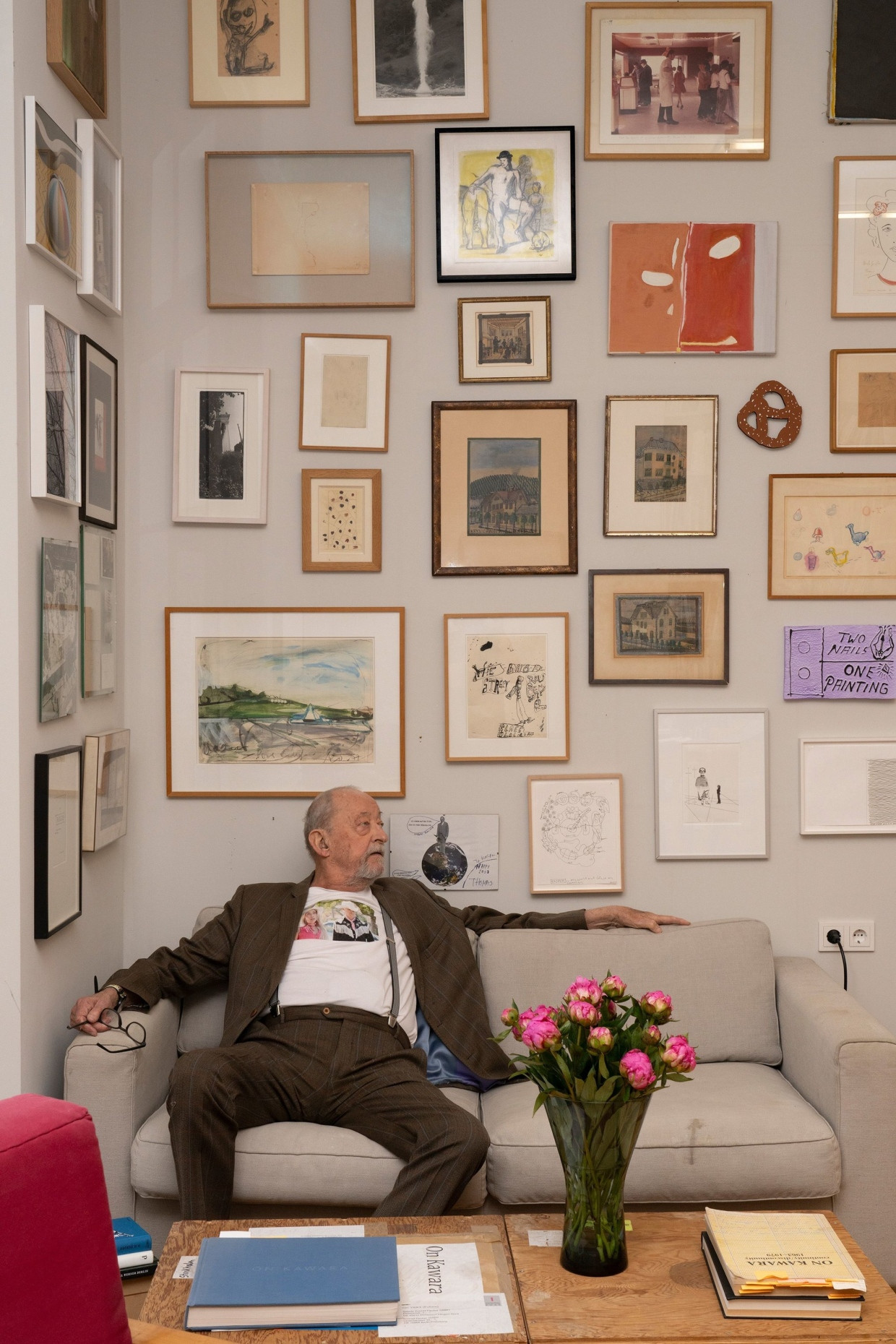Sein ausgebeultes Jacket und das klobige Adressbuch in der Hand waren seine Erkennungszeichen, wo immer er in Ausstellungen dieser Welt auftauchte – nicht nur an den üblichen Hotspots, sondern schier überall. Wo man ihn antraf, konnte man selbst nicht am falschen Platz sein. Kasper König war ein rastloser Reisender in Sachen Gegenwartskunst, wenn er sich etwas anschaute, wollte er, nach eigenem Bekunden ein „Museumsfreak“, immer alles sehen.
Etwas Vagabundisches, allerdings nichts Parvenuhaftes haftete ihm an, zu eigen waren ihm eine gewisse Schnoddrigkeit, Humor, spröder Charme und eine unausgesetzte Lust, sich an Ort und Stelle über Kunst auszutauschen. Seine Neugier ermüdete bis zuletzt nicht, wobei der gebürtige Westfale ein pragmatischer Betrachter war, der sich auf seine Intuitionen verließ – das Gegenteil von einem theoriebeflissenen Akademiker.
Weltweit beachtet
Vernissagen-Palaver mit Niveau war nicht seine Sache, und doch hatte König ständig Anekdoten parat als Folge seiner zahlreichen Freundschaften mit Künstlerinnen und Künstlern, die er ausstellte und deren Werke er oft im Entstehen begleitete, mitunter auch direkt beeinflusste. Der inoffizielle Ehrentitel „Ausstellungsmacher“ wurde außer ihm in seiner Generation nur Harald Szeemann zuteil. Anders als dem schweizerischen Kollegen brachte es der König nie zum Leiter der Documenta, hob aber gemeinsam mit dem Museumsdirektor Klaus Bußmann 1977 in Münster die Skulptur Projekte aus der Taufe, eine periodische, in der Provinz zunächst umstrittene, dann weltweit beachtete Schau im Zehn-Jahres-Rhythmus, die nun zu seinen vielen Vermächtnissen zählt. König deklarierte sie als „Tiefenbohrung“ (nach einem Wort seiner ehemaligen Mitkuratorin Brigitte Franzen) und setzte sich mit den ausgedehnten Intervallen geschickt vom Herdentrieb der Kunst ab.

The artist, born Rudolf Hans König in Mettingen in 1943, had a meteoric career that began at a very young age after the school dropout and conscientious objector left the country via London in the 1960s and gained a foothold in the New York art scene. At the time, he strategically provided the Düsseldorf gallery owner Konrad Fischer with first-hand information, helped write his list of artists and quickly began to build an unusually dense network of contacts.
From New York via Düsseldorf to Frankfurt
Early on, he curated influential exhibitions by Claes Oldenburg and Andy Warhol. As the first holder, König was an ideal candidate for the professorship of “Art and the Public” at the Düsseldorf Art Academy in 1985, before moving to the Städel School in Frankfurt, where, quickly appointed rector, he founded the Portikus exhibition space, which is still influential today.
While he made a lasting mark on the annals of groundbreaking exhibitions in the Federal Republic with “Westkunst” in Cologne in 1981 and “von hier aus” in Düsseldorf in 1984, König’s travelling biennial Manifesta in St. Petersburg, for which he was responsible, became just as controversial in 2014. The show was boycotted by some artists as an attempt to curry favor with Putin, and it also remained pale as a statement on contemporary art.

On the other hand, the balance sheet of King's twelve-year term as director of the Cologne Museum Ludwig, which he took over at the turn of the millennium and led out of a deep crisis through his charisma, contacts and ideas, proved to be sustainable – at a time when Cologne was still suffering from particularly severe phantom pains over its own loss of importance and could really use an alpha animal as a leader. He provided the museum with numerous donations with its important pop art collection and recently gave it a bundle of works of art from his own collection.
König revealed an ironic, artistic streak with the postcards he made himself, collages that he sent out all over the world, in which he expressed his opinion about the recipients, either approvingly or critically. With this practice, he even inspired the Japanese artist On Kawara to create a series of postcards in 1969 that are considered a milestone in conceptual art. König was by no means unapproachable, he appreciated contradiction, but remained reserved about any kind of appropriation through fraternization.
Strong opinions even in contradiction
One of his greatest assets was being able to consistently express his opinion to whomever he wanted. In Cologne, he once voted for Münster to be the European Capital of Culture – as an employee of the cathedral city – and received a warning for doing so. König often spoke out against cynicism in the art world and emphasized the social and moral mission of art. He apologized emphatically for an insulting attack on a female artist on a podium a few years ago, which was perceived as derogatory.
In Cologne, König had survived cancer, which forced the chain smoker to give up his “Roth Händle”. He was a man of action, not of words. But he also wrote an autobiography, which he described to this newspaper as “a humorous collage of my life”. It is due to be published at the end of this year. After another serious illness, Kasper König died last Friday in Berlin at the age of eighty. With him, the art world has lost an exceptional figure.






